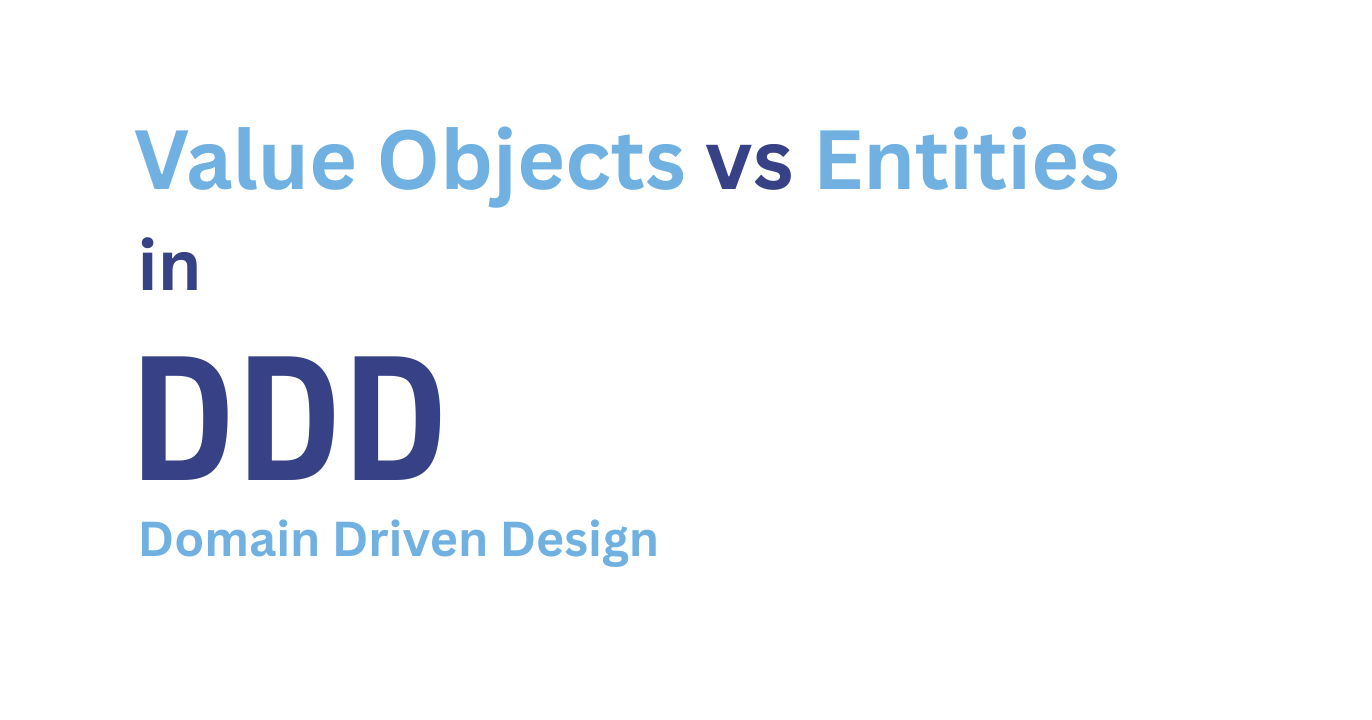Value Objects vs. Entities in DDD
In Domain-Driven Design (DDD), Value Objects and Entities are two fundamental building blocks used to model the domain.
Value Object
A Value Object represents a descriptive aspect of the domain that does not have a unique identity. Its meaning comes from its attributes, not from any kind of identifier. Think of it as a value that is defined by its content.
- Immutable: Once created, you don’t change a Value Object. Instead, you replace it.
- No identity: Two Value Objects with the same data are considered the same.
- Examples:
- A money amount (like $20.00)
- A date range
- An address (e.g., “123 Main St, New York”)
They are useful when you want to describe something and focus on what it is, not who it is.
Entity
An Entity is an object that has a distinct identity that runs through time and different states. Even if its data changes, the identity remains the same.
- Has an identity: Usually represented by a unique ID (like a user ID or order number).
- Mutable: Its properties can change, but its identity stays constant.
- Examples:
- A person
- An order
- A product in inventory
Entities are used when you care about tracking who or what something is, rather than just the values it holds.
Quick Comparison:
| Feature | Value Object | Entity |
|---|---|---|
| Identity | No | Yes |
| Equality | Based on values | Based on identity |
| Mutability | Usually immutable | Usually mutable |
| Purpose | Describes things | Tracks and distinguishes things |
This post is licensed under CC BY 4.0 by the author.
